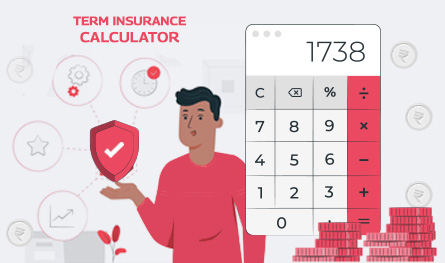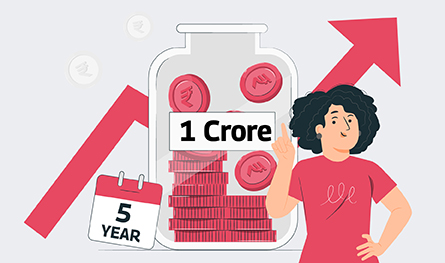Deductions under Section 80CCD of Income Tax
.png)
Payment of Income Tax is directly related to the economy of a country. Hence, every taxpayer in India is expected to pay income tax responsibly and on time for the growth of India’s economy. Although paying tax is compulsory, the government allows many provisions under the Income Tax Act to save on tax through different investment opportunities. Section 80CCD under the IT Act of India is one such provision that allows tax exemptions. This section primarily discusses deductions available to individuals that can be availed by contributing to the National Pension Scheme (NPS) or the Atal Pension Yojana (APY).
Let’s take a look at section 80CCD in detail in this post!
.png)
- What Do You Understand by Section 80CCD?
- Eligibility for Claiming Section 80CCD Deductions
- NPS Under Section 80CCD
- APY Under Section 80CCD
- Documentation and Compliance
- Section 80CCD Deductions – Conditions that Govern the Scheme
- Things to Note Regarding 80CCD Deductions
- What Deductions Are Available Under 80CCD (1) and 80CCD (2)?
What Do You Understand by Section 80CCD?
Section 80CCD is an income tax section that allows deductions to individuals against their contributions towards retirement policies like the National Pension Scheme (NPS) or the Atal Pension Yojana (APY). Employer contributions made towards NPS policy are also included in this section.
Hence, section 80CCD supports citizens in saving tax by encouraging them to save for their retirement by investing in government pension schemes like NPS and APY. The various sections of the Income Tax Act of 1961 allow a taxpayer to claim up to INR 2 lakh in a financial year. 80CCD Section is primarily divided into three sub-sections:
- Section 80CCD (1)
- Section 80CCD (2)
- Section 80CCD (1B)
What Deductions Are Available Under 80CCD (1) and 80CCD (2)?
1. 80CCD (1):
This section allows employees (both private and government) as well as self-employed people who contribute to NPS or APY to claim a tax deduction of INR 1.5 lakh every financial year. Private or government employees are eligible to claim 10% of their salary contribution under this section. On the other hand, self-employed people can claim a 20% deduction from their gross income.
2. 80CCD (2):
This section deals with contributions made by employers towards the NPS fund of employees. Here, the deduction available is restricted to 10% of the salary and DA of the employees working in the private sector. In the case of government employees, this limit is 14%.
3. Section 80CCD (1B):
Taxpayers can also claim an additional INR 50,000 deduction under section 80CCD (IB) if they have contributed beyond the permitted amount as prescribed under Section 80CCD (1)
Eligibility for Claiming Section 80CCD Deductions
- To be eligible to claim deductions under section 80CCD, an individual must be a resident Indian contributing to NPS and APY schemes.
- The age of the eligible candidate must be 18 years and above to claim a deduction under section 80CCD.
- The deductions under 80CCD can be claimed by all salaried individuals, both private and public service employees
- HUFs or Hindu Undivided Families are not eligible to claim deductions
NPS Under Section 80CCD
NPS is an organized pension scheme offered by the central government to facilitate Indian citizens’ saving for their retirement. It is a cost-effective equity-linked investment option available. Earlier NPS was only serving the government employees. However, later on, the government extended the NPS services to private employees and self-employed individuals too. NPS generally aims to support people with a retirement corpus to avail of a monthly fixed payout to live a comfortable life after retirement.
Below are some NPS key highlights:
- To avail of NPS deductions under the NPS Tier 1 Account, the eligible applicant must contribute at least INR 6,000 per annum or INR 500 per month.
- Central government employees must make NPS contributions until the applicant turns 70 years old. However, private employees or self-employed individuals are excluded from this rule.
- For NPS Tier 2 Account eligibility, the applicant must contribute at least INR 2,000/annum or INR 250/month under the scheme.
- 60% of the accumulated fund under NPS can be withdrawn as a lump-sum payout, while the remaining 40% must be invested as an annuity plan.
- Equity funds, government bonds, and government securities are some investment options to choose to invest under the scheme.
- Up to 25% partial withdrawal of the NPS fund can be made subject to conditions.
APY Under Section 80CCD
Atal Pension Yojana (APY) is another government scheme that supports accumulating funds for retirement purposes. Pensioners can avail of a minimum payment after retirement under this scheme. The applicant must be 18 to 40 years old to be eligible to invest under this scheme. The scheme requires a minimum investment period of 20 years before the policyholder starts receiving the benefits under the plan after 60 years. The plan allows premature withdrawals under certain circumstances. The investor is eligible for a pension amount of INR 1,000 to INR 5,000 per month after retirement.
Below are some key highlights of APY:
- Applicant is eligible for tax deductions of up to INR 1.5 lakhs u/s 80CCD (1) for contributing to APY
- Further, the plan allows an additional tax deduction of INR 50,000 u/s 80CCD (1B)
- The spouse is eligible to receive the payments in the event of the death of the investor
- If the investor dies prematurely before 60 years of age, the spouse can either withdraw from the scheme or may continue with it
- In the case of self-employed people, a deduction of up to INR 1.5 lakhs can be claimed for contributing to APY investments
Documentation and Compliance
1. Documents required for claiming 80CCD deductions:
The eligible applicants must show their statement of transaction as proof of contribution towards NPS/APY to claim income tax deductions.
2. Compliance with submission timelines:
Section 80CCD deductions can be availed at the end of a financial year while filing your ITR
Section 80CCD Deductions – Conditions that Govern the Scheme
Here are some conditions that govern exemptions u/s 80CCD:
- Both salaried as well as self-employed people can avail of a tax deduction u/s 80CCD
- INR 2 lakh is the maximum deduction that can be availed under 80CCD, including the INR 50,000 added deduction available under 80CCD(1B)
- You may note that the INR 2 lakh is the maximum combined deduction available under 80C and 80CCD. However, exemptions offered under 80CCD cannot be claimed under 80C
- NPS maturity fund that is used to reinvest in the annuity plan gets tax exemption
- Section 80CCD deductions can be claimed when a financial year ends, and you file your ITR
- You must produce proof of contribution towards NPS/APY to claim an 80CCD deduction.
Things to Note Regarding 80CCD Deductions
- If a taxpayer invests over INR 2 lakh combined (1 lakh each) under 80C and 80CCD, the total benefit they will earn is INR 1.5 lakh, not INR 2 lakh
- Deduction for employer contribution comes under 80CCD (2), while 80CCD (1) is the deduction for employee contribution
- An individual can be an employee or self-employed
FAQs: Deductions under Section 80CCD of Income Tax
Section 80CCD is an income tax section that allows deductions to individuals against their contributions towards retirement policies like NPS or the National Pension Scheme or APY or the Atal Pension Yojana (APY).
NPS section 80CCD relates to deductions offered to individuals against contributions made to the National Pension Scheme (NPS).
NPS deductions come under section 80CCD.
No, Section 80CCD deductions are unrelated and do not come under Section 80C.
No. Section 80C deals with investments of different types for which deductions can be claimed. On the other hand, Section 80CCD is focused on NPS and APY deductions only.

Author Bio
Paybima Team
Paybima is an Indian insurance aggregator on a mission to make insurance simple for people. Paybima is the Digital arm of the already established and trusted Mahindra Insurance Brokers Ltd., a reputed name in the insurance broking industry with 17 years of experience. Paybima promises you the easy-to-access online platform to buy insurance policies, and also extend their unrelented assistance with all your policy related queries and services.
Other Life Insurance Products
Latest Post
.png)
If you are planning to buy two-wheeler insurance and are seeking answers to some frequently asked questions, look no further. Read on to know the two wheeler insurance FAQs related to bike insurance policy in this post.


Let’s be honest – life insurance planning isn’t exactly someone’s weekend hobby. It is the financial equivalent of flossing: we understand its importance, but we tend to put it off. But somewhere between balancing work and life, you might realise you need to have a solid plan in place – just in case.


If you think of life insurance, chances are you are picturing something people buy in their 30s or 40s. But what if you are 65 or older and just getting started? The good news is that you are never too late. Whether you are thinking of easing the financial burden on your family, covering final expenses, or simply leaving behind a legacy, there are life insurance options tailored just for you.
This article will be a guide to life insurance for senior citizens above 65 years, explaining why it is important, the type of insurance options, and how to get the right policy for you.


Health insurance plans are purchased with the hope of medical protection in times of need. However, sometimes it ends up being a source of surprise and disappointment. This mostly happens when people rush to buy health insurance plans, often overlooking essential aspects. Ignoring waiting period clauses, misunderstanding exclusions, and being unaware of sub-limits can lead to unwanted problems in the future.


If you are looking at investment policies offering INR 1 Crore in 5 years, we talk about some excellent plans in this post to help you choose the best one and reach your goal. However, it is important not to get swayed. Doing proper research and taking advice from financial or insurance advisors is important. Learn about such investment plan in this post.




